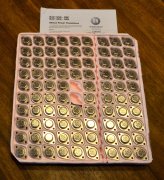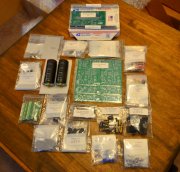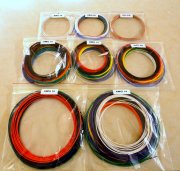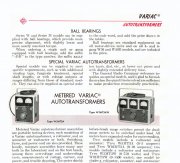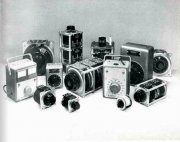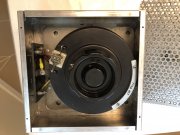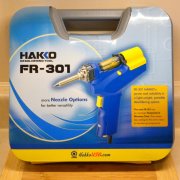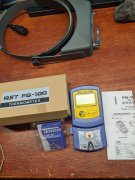I used to use silver bearing solder and learned old fashioned 60-40 (or eutectic) is fine. Rosin core is fine (just clean up), and, oddly enough, is exactly what everyone else was using since fish first grew legs and stared walking.
Aircraft are a different animal, and pretty much always Teflon coated wire that can take the heat of high-silver content solder.
In audio gear, you need to be mindful of the heat input on your components. You’re not soldering to Amphenol connectors; your going straight to components and the big ones already need 80+ watts to get hot enough.
J!m,
You wrote that as if you had worked shoulder-to-shoulder with me on all those old-block ANG F-16s. One of the Air Guard mottos back then that actually stuck in my head was simply, "Ready, Relevant, &
Reliable". (And a hard-flown 20+ year old military fighter crammed full of Avionics is rarely accused of that last adjective. :0)
So, when we had a hangar queen who 'needed' 7 or 8 black boxes swapped into
one particular spot to clear the
same exact writeup in the past year...whereas all the other (good) jets in the squadron maybe only needed 1 box swap in that same spot (plus they were all different writeups) ...then the big picture perspective suggested to me that the problem was something in the plane itself vs. "all those bad boxes" from supply/AIS.

NOTE: As all of The Elders retired around me, I suddenly woke up one day & realized that *I* was now the oldest guy in the shop. And as a reward for my longevity, my job evolved into specializing on problems in our hangar queens that had previously resisted repair. But what I first dreaded turned out to be something I enjoyed, especially because I would always pick one of the newest members in the shop to mentor/work the problem...and we never relented until the problem stopped.
Oftentimes this meant trying the next Most Probable fix on the list, have it pass all the tests possible on the ground, releasing it for flight, and then wait 2x the previous failure interval before declaring victory. Most of the time this went on for days...sometimes it was weeks or even months as we kept repeating the ever-deeper troubleshooting cycle.
Most importantly, when we were tracking a 'profound intermittent' like this, I always wanted the same airman to work it, even if it meant pulling them off of another jet. Because not if, but when we *finally* fixed it, they felt that sense of ownership afterwards...every time that jet flew Code 1 for the offending subsystem. (If it sounds deeply satisfying, it was...still is, actually. And when I retired, the shop didn't even notice, for they had learned everything I knew plus some. (!)
****
Apologies for the above, but I guess that when someone says "
Amphenol connectors" it's the same kind of trigger word for me as 'YO' (Yoko Ohno) is for others. :0) But tying this all up in a neat bow? After you've worked on a few problems like this, you discover a magic tool that turns out to be a divining rod for locating aircraft harness intermittents -- and in this case the Daniels Kit had a small assortment of "
Pin Retention Tools". So when we had a hangar queen present us with a scenario like the above (multiple LRUs in the same place over a short period of time) we'd check the pin retention on every connector to the black box, and inevitably we'd find one (or several) pins that had literally lost their grip over the years. (Especially if the black box in question had to be routinely removed & replaced in order to FOM (Facilitate Other Maintenance) over the past couple of decades.)
****
So yeah, congrats on ringing my bell first thing on a Saturday morning. :0) Except for those who have actually worked on an aircraft manufacturing line, I bet I've soldered more harness wires to amphenol connectors than most folks. Given all of the above, I grok what you stated...and will comply with your guidance. (You too, Glen & Lee!)
Thanks for stimulating that walk down Memory Flightline...
Cheers --
3D

